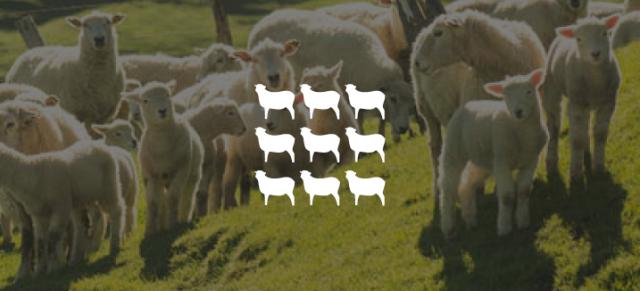Land-use change continues to have an impact on livestock numbers, according to a study by Beef + Lamb New Zealand (B+LNZ).

The B+LNZ Stock Number Survey, which provides an assessment of New Zealand’s sheep flock and beef cattle herd, shows the breeding ewe flock continues to decline with a 0.9 percent reduction following a 5.2 percent reduction last year.
“The breeding flock is the key indicator of the future flock size. It’s trending down and is expected to continue to decline, one of the contributing factors is land-use change,” says B+LNZ Chief Insight Officer Julian Ashby.
“The amount of sheep and beef farmland being converted to forestry, along with the cumulative impact of a range of other policies on farm viability, is concerning.”
An updated analysis of land-use change from pastoral farming to large scale forestry released by B+LNZ in July showed more than 200,000ha of sheep and beef farms had been sold into forestry in the last five years.
Ashby says this is now being reflected in livestock numbers.
“We have been saying for some time that there needs to be specific limits on the amount of forestry that can be used to offset fossil fuel emissions in the ETS.”
“B+LNZ is not anti-forestry, we know many farmers are interested in integrating trees into their farms, but there must be some balance.”
On a positive note, the forecast for lambing is expected to slightly increase this spring.
B+LNZ Economic Service Chief Economist Andrew Burtt says this is good news for both farmers and exporters and follows favourable Autumn conditions for ewes at mating.
Meanwhile, the number of total beef cattle at 30 June 2023, estimated at 3.81 million, is down 2.4 percent.
“The number of breeding cows and heifers increased 1.1 percent, with the South Island, mostly, leading the increase. Breeding cow numbers lifted as farmers chose to reduce weaner and trading cattle numbers,” says Burtt.
“The number of beef cattle weaners decreased 3.2 percent overall, but Southland farms bucked the trend and replenished weaner numbers by over 20 percent following two years of dry conditions.”
ENDS
For more information, please contact James Ford on 027 235 9806 or media@beeflambnz.com
Read the report below.
